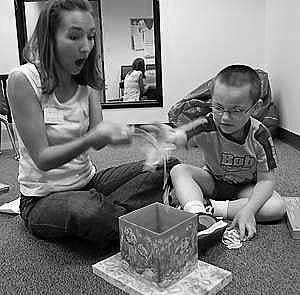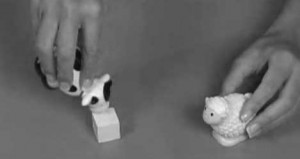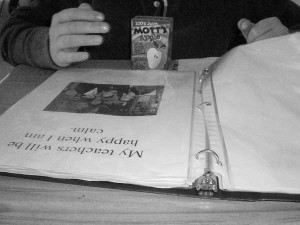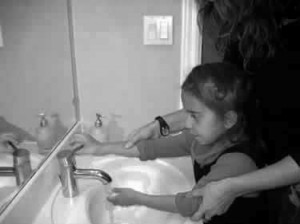Posted by admin on September 8, 2009
Many new therapists who are about to begin working with children with autism might be concerned about how to make themselves reinforcing. The main key to a proper ABA home program is for the therapist to pair themselves with highly enjoyable activities in order for teaching to occur. When a child knows that when you come over, good things happen, the ability to teach this child and reinforce this child becomes strong. How does this begin?
Have Fun During Play
For many newly diagnosed children with autism, play may seem foreign and not enjoyable. Certain rigid patterns may form since they don’t know how to play. When an ABA therapist comes to work with children, they show how fun play is and how varied play can be. In the beginning, place low or no demands in order to build a rapport with the child. This is achieved with following the child’s lead during play and making fun contingent on your presence. Here are some examples of pairing yourself with fun things:

» Read more…
Posted by admin on May 3, 2005

I found over the years of doing ABA that the use of videos to help increase appropriate behaviors really works well with many kids. Using this modality to teach children with autism is called Video Modeling. Video Modeling utilizes TV to help facilitate appropriate behaviors. This is similar to Social Stories. Video modeling is used for social skills, play, routines, and just about any behavior you want to change. Examples include increasing imaginary play, using the elevator appropriately or sitting down on the couch. » Read more…
Posted by admin on August 2, 2004

A great resource to use to help children with autism are Social Stories. Developed by Carol Gray, a Social Story describes a situation, skill, or concept in terms of relevant social cues, perspectives, and common responses in a specifically defined style and format. It explains what is happening and why it is occurring. It is primarily used for social behaviors and routines you want to increase and those situation that are new and anxiety-provoking. Stories are always personal, positive and short. Within an ABA program, Social Stories are used to help with transitions, school routines, dentist trips, hair cut trips and any other social behavior you want increased.
» Read more…
Posted by admin on February 24, 2004

Within an ABA program, there will be many opportunities for prompting a child with autism to succeed. It is sort of the cornerstone for a child with autism to learn and to succeed. If a therapist never prompted, a child will be incorrect and therefore motivation to learn drops. Prompting is just another word of helping or assisting the child to a correct response. Prompting is seen outside of an ABA context as it is a useful tool in school settings, corporate settings and home settings. Ever pointed to a puzzle piece with the intention of helping when doing a puzzle with your daughter? That’s prompting. » Read more…
Posted by admin on November 18, 2003
In an ABA program, children with autism learn effectively with discrete trial teaching. Essentially, discrete trial teaching or discrete trial format (DTT/DTF) maximizes learning by systematically breaking skills down into easy to learn components. For example, many children with autism do not imitate from their environment. In an ABA program, we first teach simple imitation of objects and of actions such as pounding a hammer or jumping. Since imitation is a huge skill to learn, ABA successfully breaks this down into manageable steps. » Read more…
Posted by admin on October 17, 2003
From working with older children, I know that secondary reinforcement (i.e. verbal praise) is precedent, as this is the method most adults use for school aged children. Just as important is incorporating imagination into a therapist’s reinforcement. Reinforcement is also more focused as play and less focused as strict praise at the table. » Read more…
Posted by admin on September 5, 2003
Since many children with autism are not motivated to learn by intrinsic rewards, it is the therapist’s job to provide external reinforcement as a means to increase the likelihood of a desired behavior. » Read more…
Posted by admin on August 23, 2003
When I first started doing ABA therapy, I found it hard to spontaneously think of reinforcement in a 2 or 3 hour session. I constantly racked my brain for cool ideas and always modeled other therapist’s or a program supervisor’s reinforcement when I had a chance. » Read more…
Posted by admin on August 16, 2003
Children who are non-verbal need other forms of reinforcement that do not necessarily require reciprocal interaction to increase their motivation to work at the table. Reciprocal interaction is a method children or adults use when interacting with others. » Read more…
Posted by admin on July 20, 2003
When giving reinforcement, a therapist must be quick, energetic, and ready to pull any special toys or social praise for independent successes. As well, there are rules to how a therapist must deliver reinforcement. » Read more…



